Idea by
Nik Vandewyngaerde, Joachim Mertens, Emiel Swinnen, Jaron Vanooteghem
DOA
Call for ideas 2017
Thinking Outside the Blocks
Thinking Outside the Blocks

Nowadays multinationals and investors are preying on every part of vacant space that used to be a vibrant, productive and economic hotspots for the cities. The challenge of our strategy shapes the resistance against this typical way of planning, where profit often forms the main idea. By focussing on local small-scale development, circular experiments and the historic identity of an urban tissue can stand strong against tendencies like gentrification. We don't believe in fully developed masterplans, but an ambition which tries to conceive a way in which a city, on every level and scale, should transform in space and time. How can an urban vision act, so the city can ensure a qualitative environment to work and live in. Interventions and small projects will try to evidence our vision, operating within a flexible timeframe and guaranteeing new perspectives for the future.
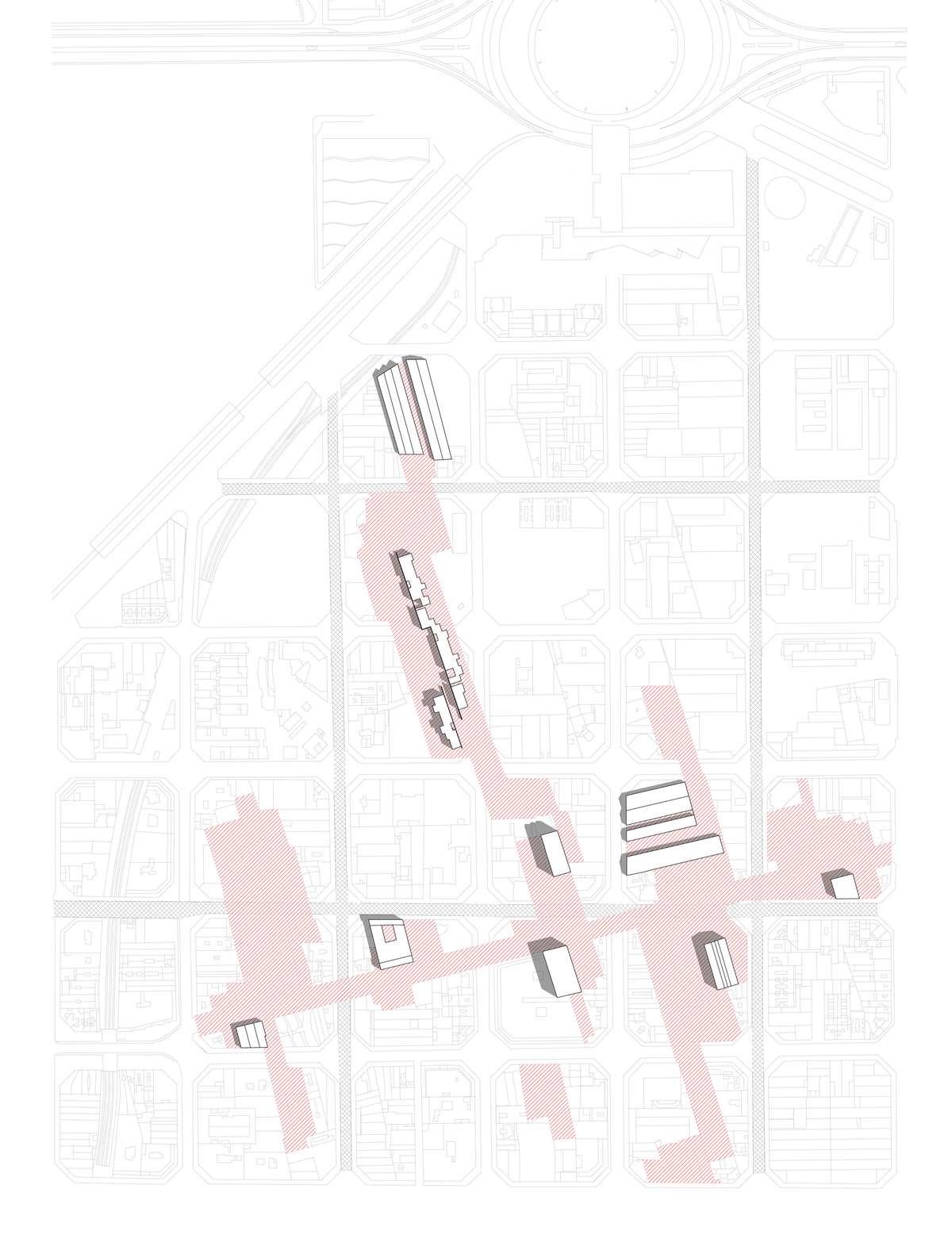
To clarify this vision we will focus on a project we have worked on in Poblenou, Barcelona. This part of Barcelona contains a disobedient anomaly in the Cerda-grid survived through time, and will be the supporting backbone of our urban strategy. We aim to highlight the historic tilted grid as an expression of the historic city and the local inhabitants. The new Superilles-plan (merging of multilple Cerda-grid blocks) can serve as a catalyst to unlock the potential energy of this stratification.
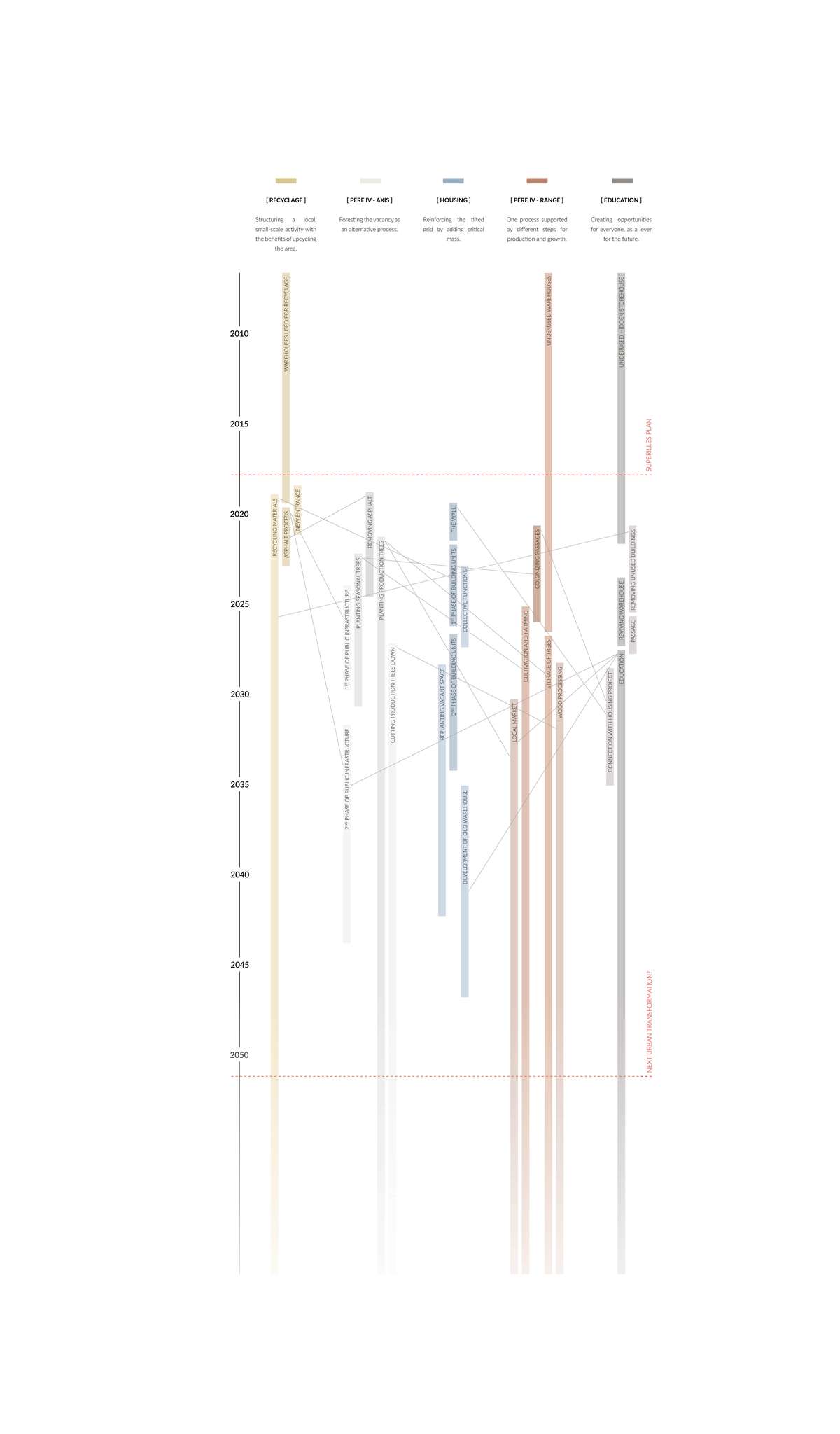
Our strategy keeps a goal in mind, where every step takes the project closer to its destination. The transformation of a city is an infinite process without a well-defined start or end. This urban project tries to be more like a process. Each project aims to react on what’s needed, and because needs change in time, they should be able to interact with each other, adapting to new influences. The completion of one phase can serve as a catalyst for a new one, even between different projects.
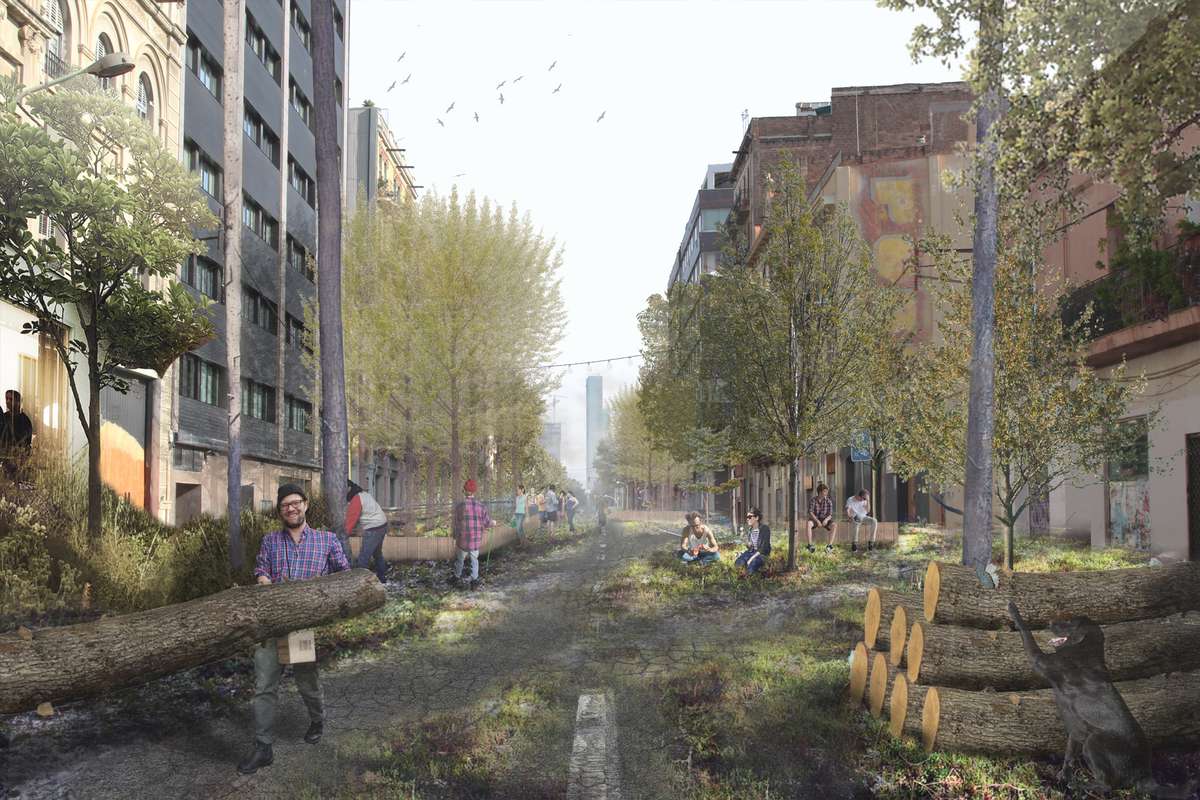
As a historical important axis the Pere IV is threatened to lose its meaning. With the arrival of the ‘Superilles’ plan, the mobility function will be shifted to new traffic axes. Instead of trying to fill up this vacancy with functions and structure, we plan on foresting this vacancy. The forestation system accumulates and transforms vacant property as well as under-used infrastructure into an adaptive and productive urban forest.

HOUSING MAKING A STATEMENT
A large vacant space can be found in the heart of El Poblenou, bounded on one side by a tilted line. Unfortunately the previous buildings were torn down for 22@ and new high-rise, partly erasing the historic tilted grid. In this project we define a tilted wall as the catalyst for further development. By doing this we don’t only close the Cerda street, but also mark the passage as a gateway between the recyclage facility and labourschool.
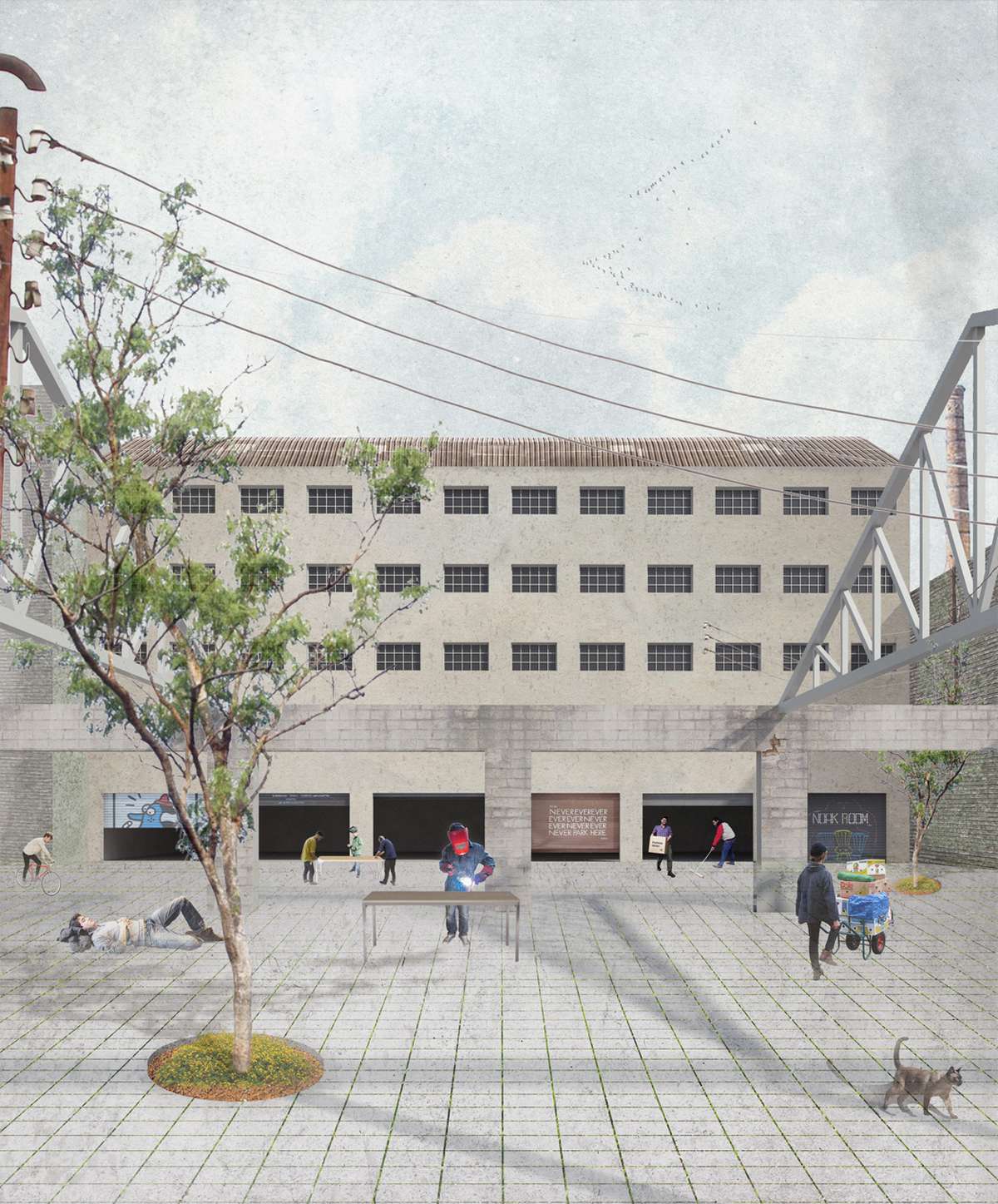
Barcelona has an unemployment rate of more then 20% and even 40% for young people. In El Poblenou numbers are even higher, desperately asking for a solution. Projects like 22@ are nevertheless offering jobs, but are often to techno-centered, only attracting well-educated people from outside the district. As a reaction we propose a project which offers a place were people can learn crafts like woodworking, mechanics, welding and more.
Thinking Outside the Blocks
Thinking Outside the Blocks

Nowadays multinationals and investors are preying on every part of vacant space that used to be a vibrant, productive and economic hotspots for the cities. The challenge of our strategy shapes the resistance against this typical way of planning, where profit often forms the main idea. By focussing on local small-scale development, circular experiments and the historic identity of an urban tissue can stand strong against tendencies like gentrification. We don't believe in fully developed masterplans, but an ambition which tries to conceive a way in which a city, on every level and scale, should transform in space and time. How can an urban vision act, so the city can ensure a qualitative environment to work and live in. Interventions and small projects will try to evidence our vision, operating within a flexible timeframe and guaranteeing new perspectives for the future.
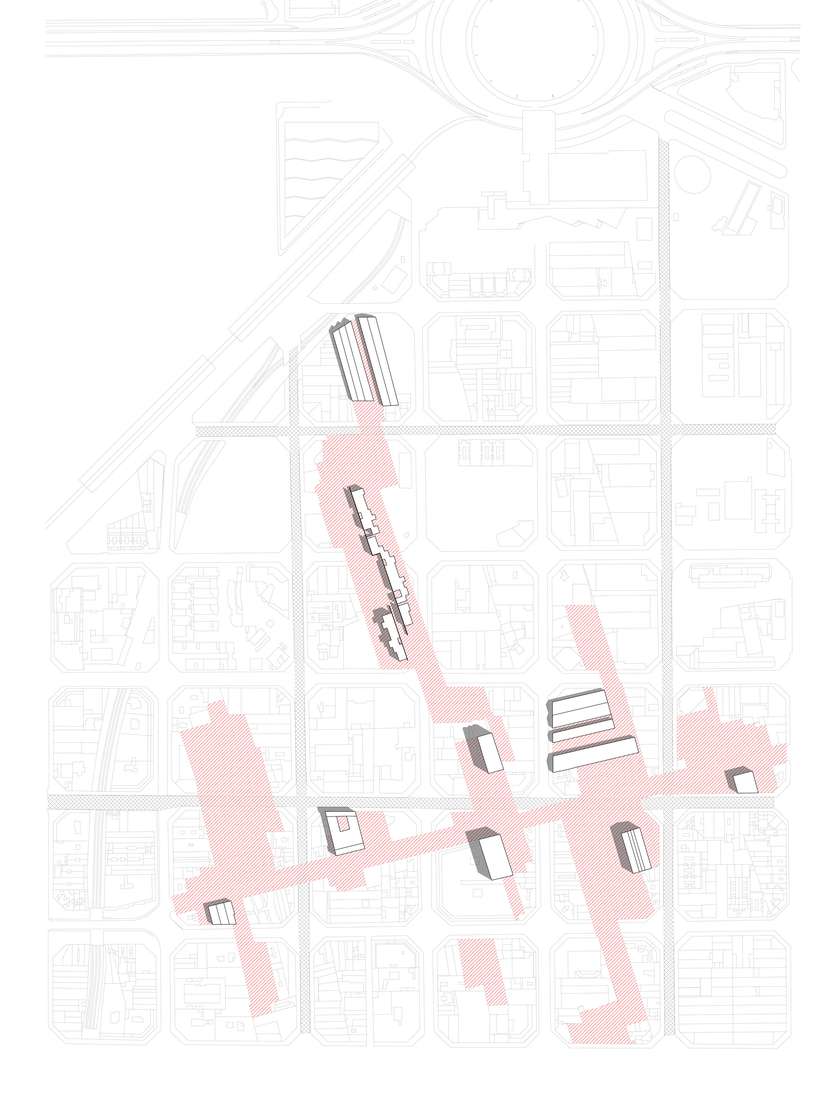
To clarify this vision we will focus on a project we have worked on in Poblenou, Barcelona. This part of Barcelona contains a disobedient anomaly in the Cerda-grid survived through time, and will be the supporting backbone of our urban strategy. We aim to highlight the historic tilted grid as an expression of the historic city and the local inhabitants. The new Superilles-plan (merging of multilple Cerda-grid blocks) can serve as a catalyst to unlock the potential energy of this stratification.
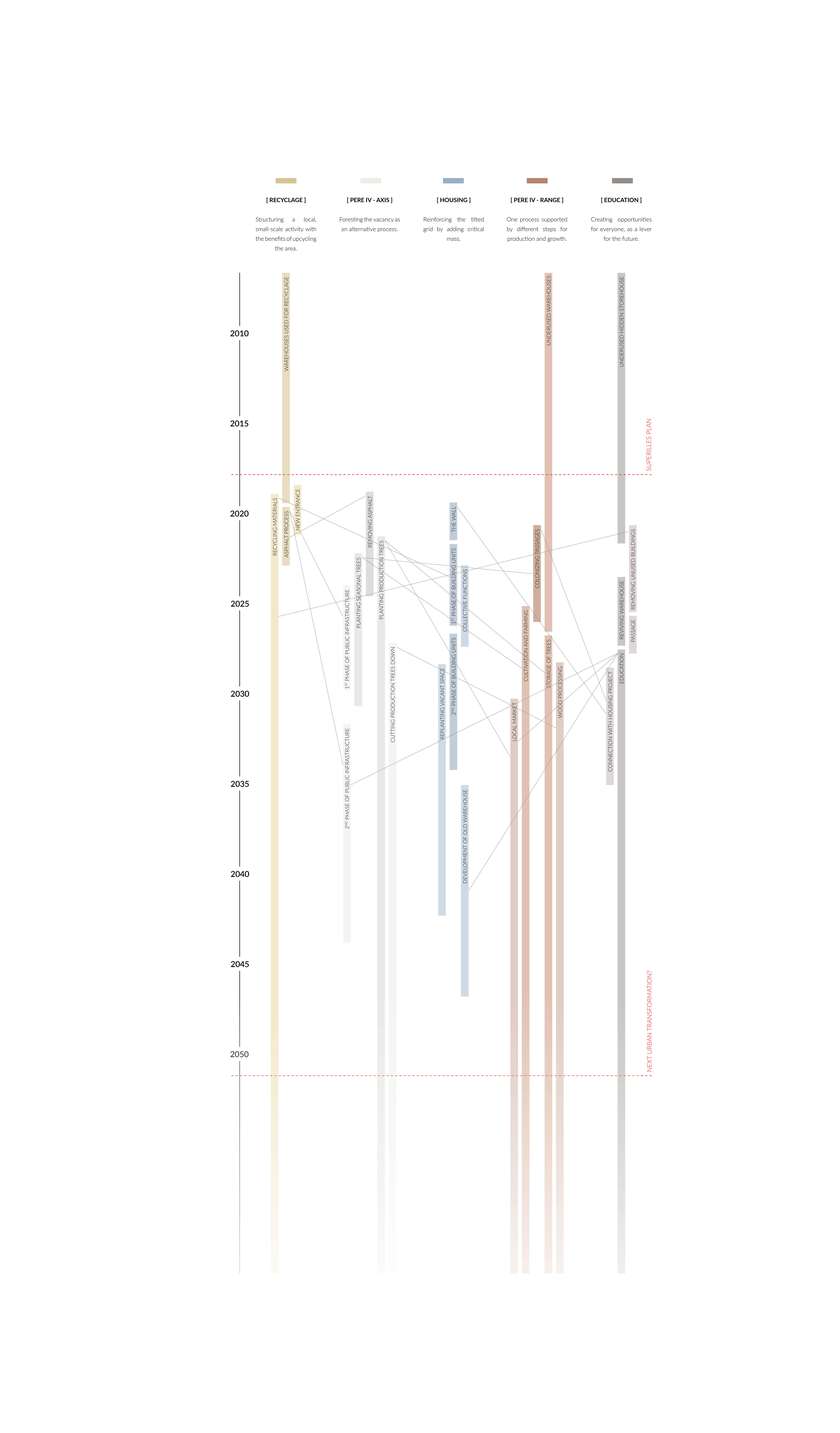
Our strategy keeps a goal in mind, where every step takes the project closer to its destination. The transformation of a city is an infinite process without a well-defined start or end. This urban project tries to be more like a process. Each project aims to react on what’s needed, and because needs change in time, they should be able to interact with each other, adapting to new influences. The completion of one phase can serve as a catalyst for a new one, even between different projects.
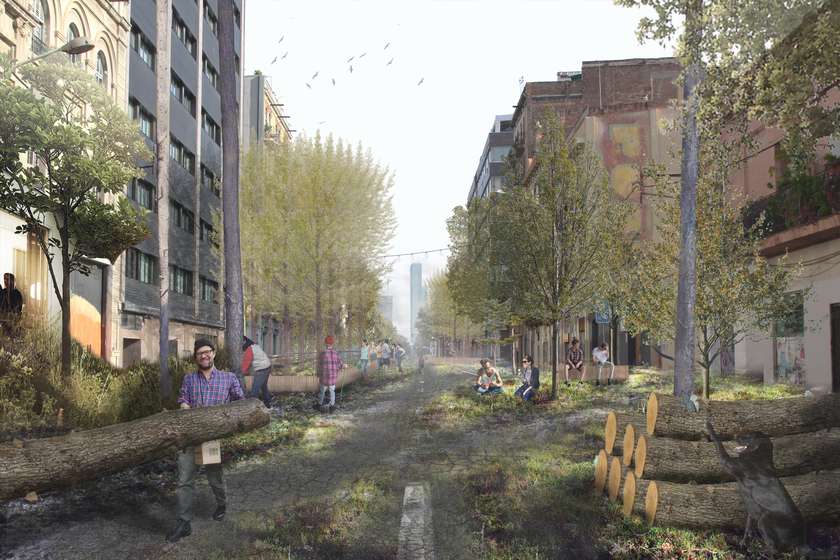
As a historical important axis the Pere IV is threatened to lose its meaning. With the arrival of the ‘Superilles’ plan, the mobility function will be shifted to new traffic axes. Instead of trying to fill up this vacancy with functions and structure, we plan on foresting this vacancy. The forestation system accumulates and transforms vacant property as well as under-used infrastructure into an adaptive and productive urban forest.
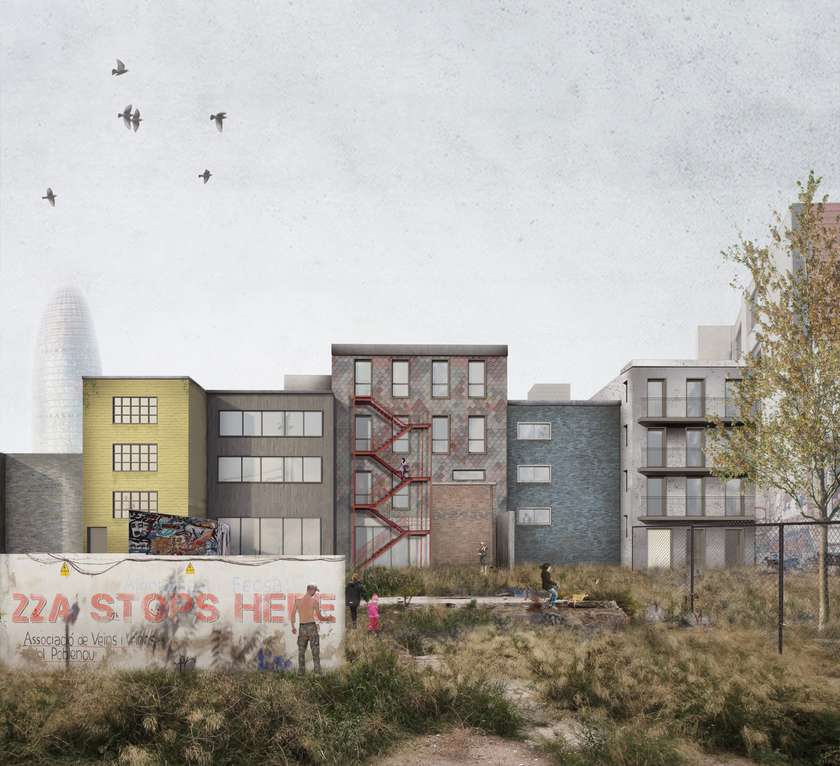
HOUSING MAKING A STATEMENT
A large vacant space can be found in the heart of El Poblenou, bounded on one side by a tilted line. Unfortunately the previous buildings were torn down for 22@ and new high-rise, partly erasing the historic tilted grid. In this project we define a tilted wall as the catalyst for further development. By doing this we don’t only close the Cerda street, but also mark the passage as a gateway between the recyclage facility and labourschool.

Barcelona has an unemployment rate of more then 20% and even 40% for young people. In El Poblenou numbers are even higher, desperately asking for a solution. Projects like 22@ are nevertheless offering jobs, but are often to techno-centered, only attracting well-educated people from outside the district. As a reaction we propose a project which offers a place were people can learn crafts like woodworking, mechanics, welding and more.